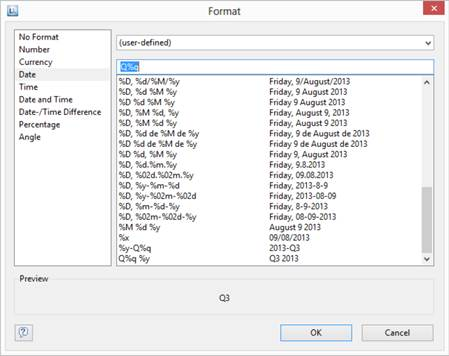In the wizard's second dialog or, alternatively, on the Cell Definition tab, you edit the properties of the different cells.
You can select the cells directly in the drawing in the upper pane of the dialog and then edit their properties. To select multiple cells, hold down the CTRL key or you can draw a border around the cells with the mouse.
1. Let's assume that the countries shouldn't be listed alphabetically but descending by turnover. Select the corresponding line header (here: Germany) and select the value Result Descending in the property Sort Order then. In combination with the property Limit To you will get a Top-N analysis by that.
2. Assuming that you want to prefix the number of the quarter with a Q as the title of a column. Select the respective column title and then double-click on the Displayed Contents property.
With this property, you can now specify the text that is to be displayed in this cell (independent of the value that you have defined for this column grouping).
Now define either a suitable formula, e.g., Q + Str$(Quarter(Orders.OrderDate)) in the formula wizard
3. Alternatively use the Format property. Then remove the Quarter$() here, i.e., only the date field remains in the field, and format the value by means of the property.
To do this, click the Formatting property, choose Date as the formatting type, and finally select the User-defined entry from the drop-down list. At the end of the list you will find an example for formatting a quarter plus the number of the year. Since we don't need the number of the year, shorten the formula's string to Q%q.
4. This cell is now formatted and you can go on to format all other cells in the same way. Various properties are available including:
· Rotation of the content in increments of 90°
· Background
· Frame
· Font
· Vertical and horizontal alignment
· Maximum width, minimum width and minimum height

